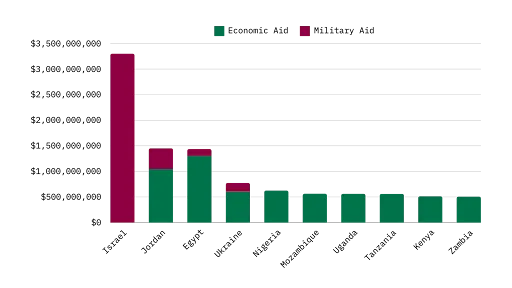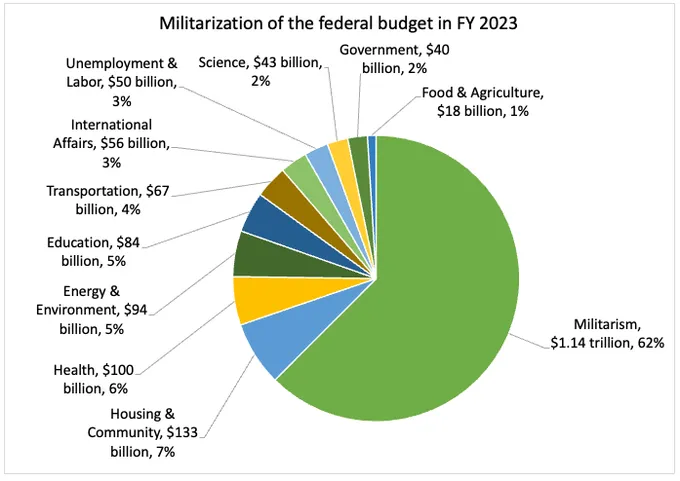Foreign Aid vs. Homefront: The Middle Class Party’s Call for Domestic Prioritization
Despite the pressing needs within our own borders, billions of dollars in foreign aid are allocated to other countries each year. From humanitarian relief to economic development projects, these funds aim to support global stability and growth. However, many Americans—especially the middle class—feel left behind, as their struggles with inflation, stagnant wages, and lack of affordable healthcare continue to mount. This disconnect is at the core of the Middle Class Party’s platform: why send so much aid abroad when our own communities are in desperate need of support?
This article explores the vast sums of money spent on foreign aid and makes the case for reallocating these resources to address pressing domestic issues. By diverting a portion of this expenditure to support communities at home, the U.S. could foster both economic stability and opportunity for millions of middle-class Americans.
Foreign Aid Defined
U.S. foreign aid falls into two main categories: military aid and economic aid. The allocation of these funds follows a complex process, starting with the president’s budget request and moving through several stages, including congressional appropriations, detailed planning, obligations, and, ultimately, disbursement. Given the lag in reporting, we’ll focus on the actual foreign aid disbursed in 2023 and examine the funding levels requested by the president for 2024.
The U.S. spent $61 billion on foreign aid in 2023. Fully half of that budget has gone to just ten countries. The following chart from ConcernUSA.org showcases the top ten countries that received the most foreign aid.

Here is the list broken down:
Ukraine ($16.4 billion)
Israel ($3.3 billion)
Ethiopia ($1.95 billion)
Jordan ($1.65 billion)
Egypt ($1.43 billion)
Afghanistan ($1.19 billion)
Somalia ($1.13 billion)
Yemen ($1.05 billion)
Congo ($987 million)
Syria ($896 million)
Here is the 2024 chart for U.S. foreign aid spending:

Again, we break it down:
The proposed budget for 2024 is a little over $50 billion, roughly 17% less than 2023, with 20% of that budget requested for just ten countries:
Israel ($3.3 billion)
Jordan ($1,45 billion)
Egypt ($1,43 billion)
Ukraine ($774 million)
Nigeria ($625 million)
Mozambique ($564 million)
Uganda ($562 million)
Tanzania ($561 million)
Kenya ($514 million)
Zambia ($507 million)
This doesn’t include additional aid packages to countries such as Ukraine and Israel.
Americans Want Money Spent At Home
According to Globalaffairs.org, this year’s Chicago Council Survey—a comprehensive overview of American public opinion on critical U.S. foreign policy issues—conducted from June 21 to July 1, reveals that Americans largely agree on prioritizing government spending for domestic programs such as Social Security, healthcare, education, and infrastructure. However, as international conflicts intensify, public opinion becomes more divided regarding defense spending and foreign aid allocation.
A majority of Americans support expanding the federal budget for key domestic programs, with 67% favoring increased spending on healthcare, 66% for education, 66% for public infrastructure improvements, and 58% for Social Security. In contrast, half of the population wants to reduce government spending on military aid (50%) and economic aid (51%) to other countries, while around a third prefer to keep such spending at current levels (35% military, 33% economic). When it comes to defense spending, 39% of Americans want to maintain the current budget, while 28% favor an increase and 26% prefer a reduction.
Despite increasing political polarization in the United States, strong public backing for core domestic programs remains unchanged. Since 1974, Council surveys have consistently shown that Americans are more inclined to support expanding government spending on education, healthcare, Social Security, and public infrastructure rather than on defense or military and economic aid to foreign nations.
How did this happen?
The Warfare State
“Got money for war, but can’t feed the poor.”-Tupac Shakur
How did the country get into this situation?
It goes back to the 1960s when former President Lyndon B. Johnson’s administration ramped up U.S. involvement in the Vietnam War and sidelined the War on Poverty initiative; the federal government has progressively reduced social spending, allocating a growing share of the national budget to militarized programs.
And it has only gotten worse.
According to a report by Nationalpriorities.org, less than $2 out of every $5 in federal discretionary spending is allocated to investments in people and communities, including public education, housing, child care, disaster relief, environmental programs, and scientific research.
In contrast, the U.S. spends $16 on the military and war for every $1 dedicated to diplomacy and humanitarian foreign aid. The bulk of militarized spending, amounting to $920 billion, goes toward weapons, war, and the Pentagon, while only $56 billion is allocated to international affairs, diplomacy, and humanitarian aid.
Here’s a chart that breaks it down from the Office of Management and Budget:

And no, this money is spent wisely. A Department of Defense study found $125 billion in unnecessary back-office expenses (and the Pentagon buried the report) that could be trimmed.
Imagine what that money could do for you? For the middle class? For the country?
There needs to be accountability.
There needs to be a better way.And that is exactly what we intend to do
